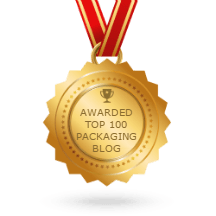Flexible Packaging Features That Add Real Value
Using shelf impact to sell more product goes beyond just having a pretty package. Added flexible packaging features can supercharge your product’s perceived value to consumers, lock in brand loyalty, and drive repeat purchases. Here are our top four considerations when designing value-boosting flexible packaging.
1. Flexible Package Structure
Choosing flexible packaging has a number of benefits before your product even hits the retail shelf. Warehousing and transportation costs can be greatly reduced with flexible packaging versus rigid or semi-rigid solutions.
The structure of your package is determined by a number of criteria, but one question you should always ask is: how can I maximize consumers’ face time with the package? Flexible packaging that exceeds expectations throughout the product’s lifespan is much less likely to end up in a more functional—but unbranded—replacement package.
Is my flexible package structure:
- Easy to store?
- Easy to use and/or reuse?
- Easy and convenient to transport?
- Able to perform for the entire lifespan of the product?
A prime example of a flexible package that maximizes consumer brand exposure is a microwavable package. This convenient vented structure allows consumers to purchase, transport, and prepare the product all in the same package, meaning your brand graphics stay visible and top-of-mind throughout the entire experience.
2. Closure Features
If your product is intended to be used more than once, adding a resealable closure feature to your flexible package design is the single most effective way to add value to your packaging. Press-to-close, hook-to-hook, top slider, and fitment (spout) closures encourage consumers to continue using a product’s original packaging for storage and elevate the experience of using your product. In many consumers’ minds, a resealable product is a premium product and is worth a higher price tag.
3. Graphic Elements
Choosing graphic elements for your flexible packaging design presents an opportunity to instruct, educate, and inspire. The appearance of your package can be both visually striking and valuable by incorporating instructions and ideas for product use into the graphics.
Can you use graphics to:
- Make your customer’s life easier?
- Make using your product easier?
- Make storing your product easier?
- Share tips and tricks for using your product?
- Inspire your customer to try something new or aspire to something new?
4. Sustainability Features
In a 2014 survey, 56% of American consumers said they would like to have more sustainable packaging options for the products they buy, and that 52% of Millennials are willing to pay more for earth-friendly packaging options1. When environmental friendliness matters to consumers, green flexible packaging practices can add value (and credibility) to your product.
Add Value To Your Flexible Packaging Strategy
Ultimately, the best flexible packaging strategy to add value to your product depends on its unique characteristics and requirements. Ready to boost the perceived value of your flexible package? Our award-winning R&D and Product Planning departments have helped our customers become more successful since 1956—contact us today to find out how to start adding real value to your flexible packaging strategy.


